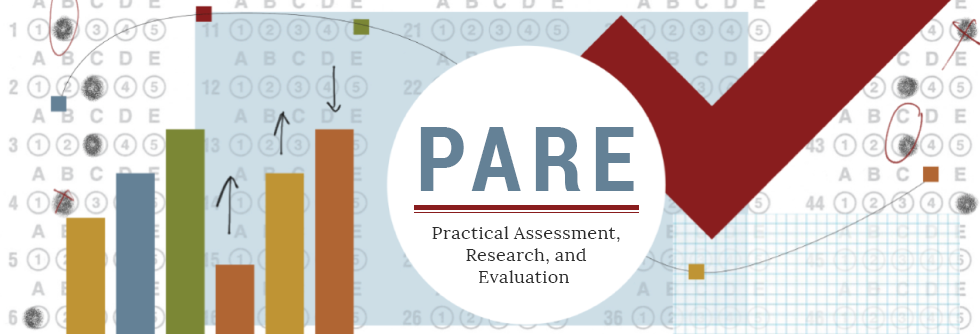Developing Rubrics to Assess Complex (Generic) Skills in the Classroom: How to Distinguish Skills’ Mastery Levels?
DOI
https://doi.org/10.7275/0eat-hb38
Abstract
Many schools use analytic rubrics to (formatively) assess complex, generic or transversal (21st century) skills, such as collaborating and presenting. In rubrics, performance indicators on different levels of mastering a skill (e.g., novice, practiced, advanced, talented) are described. However, the dimensions used to describe the different mastery levels vary within and across rubrics and are in many cases not consistent, concise and often trivial, thereby hampering the quality of rubrics used to learn and assess complex skills. In this study we reviewed 600 rubrics available in three international databases (Rubistar, For All Rubrics, i-rubrics) and analyzed the dimensions found within 12 strictly selected rubrics that are currently used to distinguish mastery levels and describe performance indicators for the skill 'collaboration' at secondary schools. These dimensions were subsequently defined and categorized. This resulted in 13 different dimensions, clustered in 6 categories, feasible for defining skills’ mastery levels in rubrics. The identified dimensions can specifically support both teachers and researchers to construct, review and investigate performance indicators for each mastery level of a complex skill. On a more general level, they can support analysis of the overall quality of analytic rubrics to (formatively) assess complex skills. Accessed 2,884 times on https://pareonline.net from December 11, 2017 to December 31, 2019. For downloads from January 1, 2020 forward, please click on the PlumX Metrics link to the right.
Creative Commons License

This work is licensed under a Creative Commons Attribution-NonCommercial-No Derivative Works 4.0 International License.
Recommended Citation
Rusman, Ellen and Dirkx, Kim
(2019)
"Developing Rubrics to Assess Complex (Generic) Skills in the Classroom: How to Distinguish Skills’ Mastery Levels?,"
Practical Assessment, Research, and Evaluation: Vol. 22, Article 12.
DOI: https://doi.org/10.7275/0eat-hb38
Available at:
https://scholarworks.umass.edu/pare/vol22/iss1/12

Comments
https://doi.org/10.7275/0eat-hb38